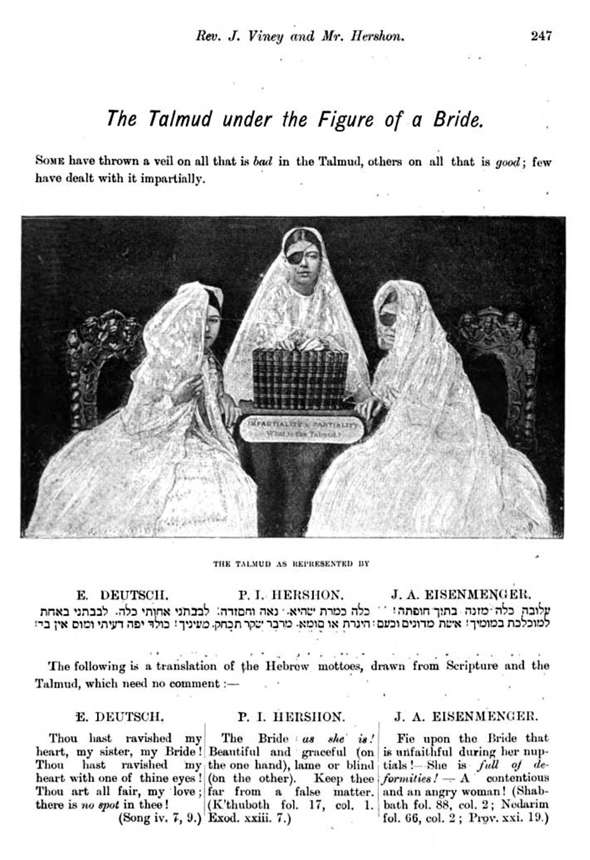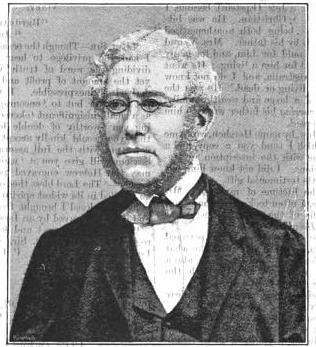
This is from an 1894 book called Memories of gospel triumphs among the Jews during the Victorian era by John Dunlop, all about how successful British missionary efforts were during the 19th century.
This particular exceedingly strange posed picture is meant to illustrate three approaches of three writers on the Talmud; hot, cold and just right. The brides represent the flawed beauty that is the Talmud and as described by a different writer. As you can see by the caption, the point is that one writer veiled all that is bad in the Talmud (on the left, so that you cannot see she has one eye patch), one writer veiled all that is good (on the right, so that you cannot see that she has one good eye), and the other wrote of it impartially (in the middle, with one patch and one good eye). The impartial one is Paul Isaac Hershon, a converted Galician Jew born in 1818, who wrote אוצרות התמלמוד (Treasures of the Talmud, being a series of classified subjects in alphabetical order from "A" to "L"). He died in 1888.

The writer who veiled all that is bad is Emanuel Deutsch, who wrote a very famous article which was widely read all over Europe, called Der Talmud, and the writer who veiled all that is good is Johann Andreas Eisenmenger.
